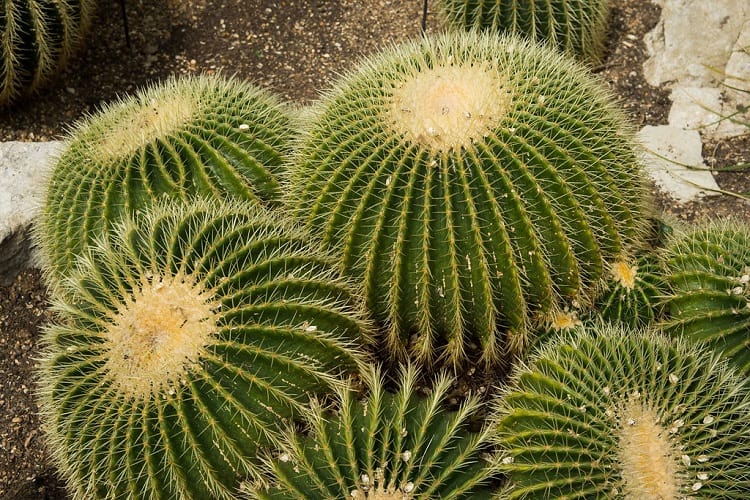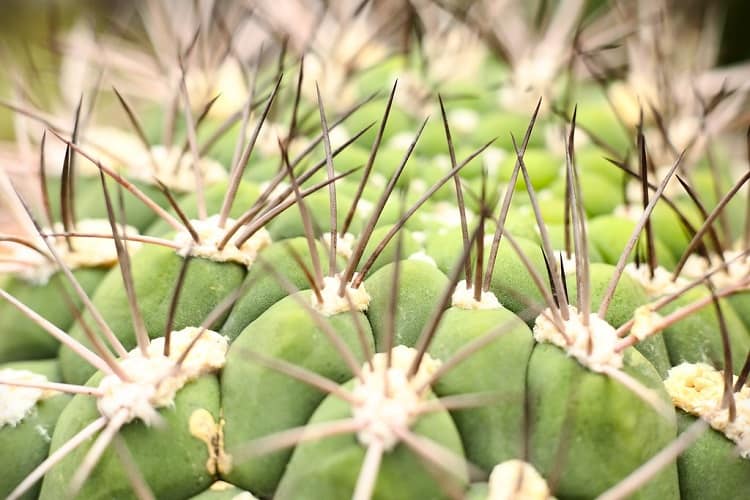Survival Strategies: How Cacti Adapt to the Desert
Why are cacti so full of water? And what’s with all those thorns? Well, it turns out cacti are quite the survivors. They thrive in scorching hot deserts, where rainfall is as rare as finding a needle in a haystack, and temperatures soar above a blistering 113°F! To withstand these harsh conditions, cacti have developed some extraordinary adaptations. These adaptations are the secret behind their unique features. Today, we’re going to delve into the fascinating world of cactus adaptations in the desert. Get ready to be amazed by the incredible ways these spiky wonders have evolved to conquer the harshest of environments.

Contents
How Do Cacti Adapt To The Desert?
Let’s dive into the fascinating world of cactus adaptations and uncover their secrets to thriving in challenging environments.
1. Succulence of Cacti
Cacti are succulent plants, which means they have the ability to store water in their tissues. Since rainfall is infrequent in their natural habitats, cacti have evolved to store a large amount of liquid in their stems. This water reserve allows them to withstand dry periods and survive in water-deprived environments. As an example, the saguaro cactus, the largest cactus in the world, can absorb around 9,000 liters of water after a storm, transforming itself from a 1-tonne plant to a 10-tonne powerhouse. With this impressive water storage capability, it can endure up to two years of drought.

2. Spherical or Columnar Stems
Cacti have unique stem shapes that contribute to their water-saving abilities. Most cacti have spherical or columnar stems, which provide them with a greater volume of water storage while minimizing surface exposure to the dry air. This means less water loss through evaporation. Additionally, their less-branched structure maximizes water retention and reduces the contact area with the arid environment. The folds in their stems serve a dual purpose: they increase the surface area for water absorption and act as expandable “bellows” that allow the cactus to expand when it absorbs water. This is why these fascinating plants often appear more rounded after a good drink.

3. Leaf Spinescence of Cacti
One of the most noticeable adaptations of cacti is the transformation of leaves into spines. This spinescence serves multiple purposes. Firstly, it reduces evaporation, helping the cactus conserve precious water. Secondly, it acts as a defense mechanism against animals, forcing them to target more vulnerable parts of the plant, such as fruits or seeds. In this way, cacti ensure the dispersal of their species. The spines emerge from specialized areas called areoles, which are equivalent to branches in other plants.

4. Cactus Pubescence
Some cacti species have developed a cover of fine hairs or pubescence. This hairy appearance serves several purposes. It reflects the sun’s rays, reducing the risk of dehydration and protecting the plant from sunburn. Additionally, the hairs provide insulation against the low nighttime temperatures in high-altitude areas, where thermal contrasts between day and night are significant.

5. Root Adaptations of Cacti
Cacti have a distinctive root system adapted to their unique water-scarce habitats. Their roots are shallow, as they need to absorb rainwater quickly. However, these shallow roots extend over a considerable distance to maximize the surface area for water absorption. This broad and superficial root system allows cacti to make the most of rainwater, especially in soils where water penetration into deeper layers is limited. Additionally, surface roots can also take advantage of condensed water at ground level, such as dew.

6. Crassulacean Acid Metabolism (CAM)
Cacti, along with other succulent plants, employ a unique type of photosynthesis called Crassulacean Acid Metabolism (CAM). Unlike most plants that open their stomata during the day, cacti open their stomata at night to reduce water loss by evaporation. This is crucial in conserving water in arid environments. During the night, cacti absorb carbon dioxide and release oxygen. The carbon dioxide is stored as acid (usually malic acid) until the next morning when the cactus, in the presence of sunlight, uses chlorophyll to extract the carbon dioxide from the acid and convert it into sugar. This nighttime gas exchange and sugar production process is what allows cacti to thrive in water-deprived conditions.
Conclusion
These incredible adaptations are what make cacti so perfectly suited to the harsh desert environment. From their succulent stems to their spines and specialized root systems, cacti have evolved some truly remarkable strategies to survive and flourish in the most challenging conditions nature has to offer.
